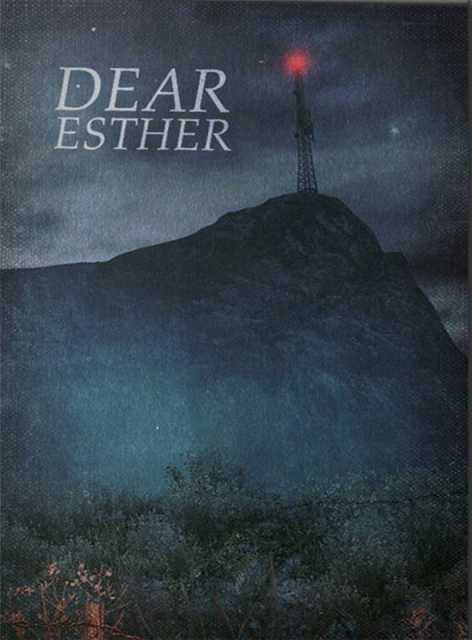The Interactive Poem
Dear Esther is the antithesis of the traditional video game, to the point where it’s debatable whether it’s a game at all. The only player actions are moving through the world and looking around, while the only thing close to a gameplay goal is to progress through the environments until you reach the end. Dear Esther doesn’t aim to engage you through action, strategy, or puzzles, but through mystical surroundings, poetic narration, and haunting music.

The “game” takes place on an unpopulated island in the Outer Hebrides, where as you hike across the wind-blasted cliff tops and through the damp underground caverns, you listen to a series of letters addressed to a woman named Esther being read aloud. These letters don’t simply impart a story, but consist of carefully constructed metaphors and evocative imagery. The tale they tell is somewhat ambiguous and open to interpretation, but they clearly point to an event of a certain nature in the author’s life. Themes of discovery and melancholy run throughout, as do recurring reflections on the subject of death. Occasionally the metaphors feel forced and the game feels like it makes some slightly uncomfortable stretches to achieve a lack of clarity in its story, but taken as a whole it's a rather powerful piece of writing, especially because of the way it ties into the aesthetics of the experience.
The environments of Dear Esther are more modest and reserved than those of the average video game, but do sometimes verge on the fantastical. There are locations such as large open caves daubed with fluorescent paint, presenting a beautiful and mysterious element to the island, but the majority of the areas, which are grassy desolate coastlines and quiet beaches strewn with the rusted wreckage of boats and cars, build with the story towards a memorable sense of loss and loneliness. This is only amplified by the echoing choral music and sorrowful piano and orchestral pieces of the game’s soundtrack. The sombre tone of Dear Esther is one that sticks with you long after you’ve walked away from your PC.
As affecting as Dear Esther can be, there did come a point where I began to wonder whether a video game was the best format for the experience it’s trying to create. By putting you in the driver’s seat, Dear Esther allows you to explore as much or as little of the environments as you want, but there’s only so much in the way of diversions, the game is a largely linear affair, and pacing remains roughly the same on each playthrough, with there being a very fixed speed at which you can move. I’m all for games that are trying to push the limits of the medium, and the interactive element certainly helps colour the experience, but when you realise that almost all your left hand has been doing for the last 45 minutes is holding down the “W” key, you start to wonder how integral your input really is to what’s going on. Given that you can complete it in under an hour without rushing, I don’t think Dear Esther fully justifies its £7 price tag either.
In pricing and providing engaging interactivity, Dear Esther has its issues, but for those who’ve wanted to see a game that escapes the standard fun and empowerment of most interactive entertainment, and replaces it with lingering sadness and poetic presentation, Dear Esther is a journey you can’t afford to miss.

10 Comments